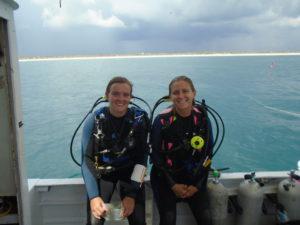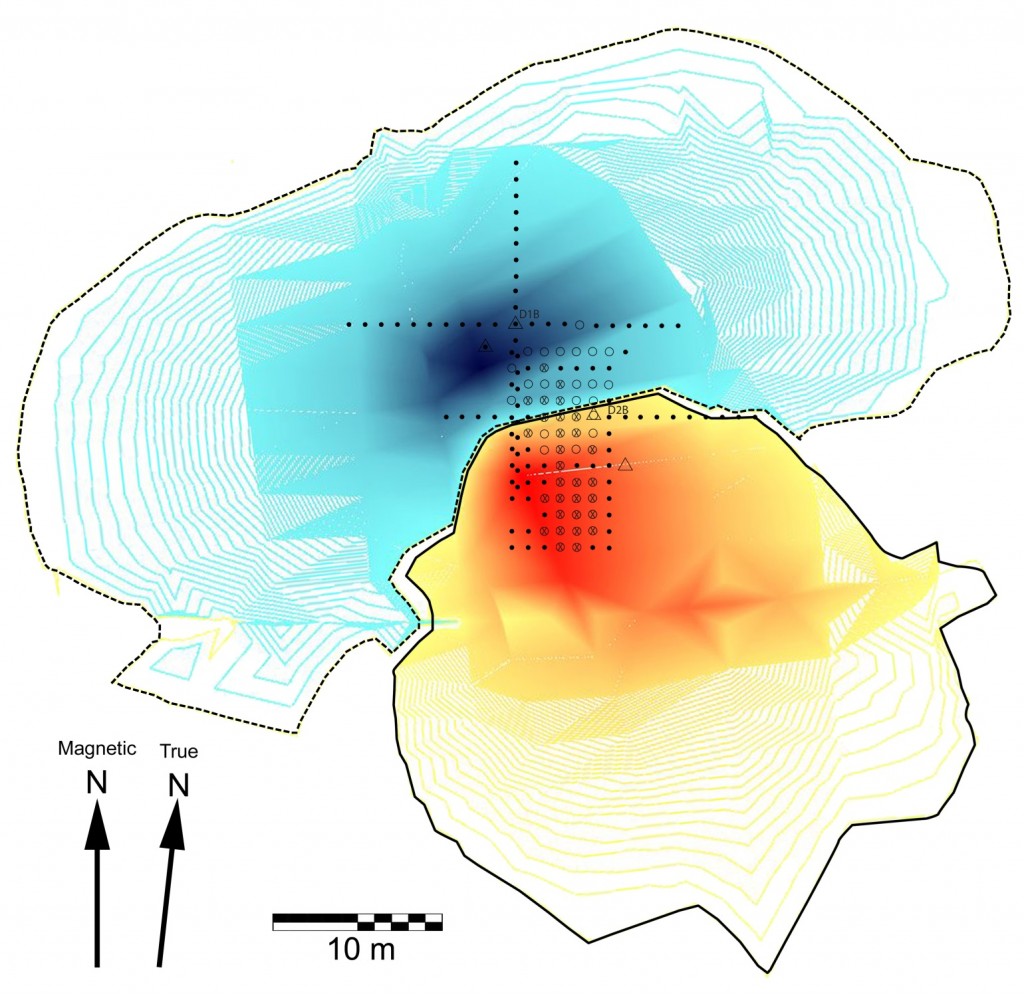As we begin to move into our 2016 field season, we are excited to introduce the results of the 450th Anniversary Shipwreck Survey, that the Lighthouse Archaeological Maritime Program (LAMP) carried out over the 2015 field season. The “450th Anniversary Shipwreck Survey” was a project carried out as part of LAMP’s multi-year First Coast Maritime Archaeology Project, which has been ongoing since 2007. The 450th Anniversary Shipwreck Survey, named in honor of St. Augustine’s 450th anniversary which occurred in 2015, was funded by a State of Florida, Division of Historical Resources Small Matching Grant (No. S1604).
Previous Posts:
Ground truthing, or testing previously identified targets, was one of the principal objectives of the 450th field season. The first site to undergo this ground truthing was a target that had originally been identified in 1995 by Southern Oceans Archaeological Research (SOAR) during the first purely research oriented marine magnetometer survey of the St. Augustine area.
The target was re-surveyed by the Lighthouse Archaeological Maritime Program (LAMP) in 2009 and designated as Hulk. It was selected for additional work in 2015.
Ground Truthing for Shipwrecks
First ground truthing efforts in 2015 yielded no results for this promising target so it was decided to acquire a new set of magnetic data. This target survey was done on July 15th and once contoured the data yielded a close but different location from which to begin ground truthing operations.
Dive operations began on July 16th, 2015 with a refined placement of the drop buoy by the first dive team. A twenty meter tape was centered on the target running east-west and the team began to test the transect with a hydro-probe, a galvanized steel pipe through which water is pumped at high pressure.
The water jets the pipe down into the seabed and the archaeologist controls the descent of the probe until the full ten foot length of pipe has sunk into the sand or until a hard return is obtained.
Positive Returns
A positive return is anything that prevents the probe from sinking further into the sand. In the area around St. Augustine where that are no coquina stone outcrops near the seabed, this is usually explained by a shipwreck though a sunken log could also yield a positive return.
The first three probes directly west of the drop buoy resulted in deeply buried positive returns. These were deeply buried at more than two meters ranging from 2.76m to 2.14m (9ft to 7ft). This depth of burial is pushing the limits of our 10ft hydro-probe. Though hydro-probing can be done to grater depths below the seabed, it becomes impractical since it is very difficult to get down to such depths with our induction dredges to verify the nature of the target.
In this case, since we are within the operational limits of our hydro-probe we decided to conduct a systematic probing of the site in order to obtain knowledge of its spacial extent.
Twelve additional east west transects were established. A total of 145 probes were sunk while delineating the Hulk target. These probes returned two distinct types of positive returns as well as a number of negative returns.
One sort of positive return was the “hard” return where the divers could feel the probe encountering something hard that produced a vibration indicating concretions. These are single objects, or collections of objects, material culture, that began with something iron which over time became encased in layers of calcium carbonate, a shell like substance. This process is the result of iron corrosion.
Such concreting iron objects eventually come into contact with other objects, often of other types of material, and these other objects are then also encased and covered in concretion. Over time these concretions grow and can eventually included a great multitude of objects.
The other type of positive return was a “soft” return.
This return had a very different feel to it. In these cases the sound and vibration made was of a much lower frequency with some give to the return. This likely represents wood. Since these are distributed around the site and interspersed with the “hard” returns of concretions, this clearly represents a shipwreck site. The pattern of positive returns indicates buried material oriented roughly north to south some 14m long and 4m to 6m wide.
The deepest positive return at this site was 2.88m, or 9.4ft, deep and has led to the site being named the Nine Foot Under Site with the Florida Master Site File designation of SJ6460. This site is too deep to excavate using the conventional induction dredges that are common to the field of Marine Archaeology.
There is a working theory among the staff of the Lighthouse Archaeological Maritime Program that over the course of centuries shipwrecks work their way deeper into the sand column. The sands off the coast here come and go on a regular basis.
For example, a wrecked vessel may have its keel settle at 20ft below the water’s surface on the seabed. If the first storm to affect that wreck removes five feet of sand from that area the wreck site would settle five feet into the seabed.
If over the course of the following year the sands return to the same level as during the wrecking event, the keel of the ship wreck would then be 25ft below the water’s surface and five feet under the level of the sea bed.
Over a few hundred years with one or two “storm of the century” events, earlier shipwrecks would find their way deeper and deeper into the seabed eventually reaching depths that are impractical to work with conventional excavation equipment.
A Controversial Tool
There is a proven tool that can quickly remove many feet of overburden; the sterile soil or sediment that lies on top of an archaeological deposit. However, the tool has in the past, and to this day, been abused by treasure hunters who use it to blow apart shipwrecks and open large craters in the seabed from which they then collect the densest material that settles into the bottom of the crater such as gold, lead, or heavy iron concretions.
This unprofessional and destructive use of the blower, or prop wash deflector, has given the tool a bad name.
A scalpel used by a surgeon can save a life, but used by a brigand, it can be used to kill. The blower is no different. If used in a careful manner by marine archaeologists to remove eight feet of over burden from the Nine Foot Under Site, conventional excavation techniques could then be used to remove the final foot of overburden covering the shipwreck site and the archaeologists at LAMP could see if there was anything to their theory about older shipwrecks being buried deeper than the more recent.
It’s a theory well worth testing; and we have the perfect, tightly delineated, shipwreck target to test it on.
Dr. Sam Turner joined the St. Augustine Lighthouse & Maritime Museum in 2006. Dr. Turner earned his master’s in nautical archaeology at Texas A&M University and received his Ph.D. in Spanish and Spanish American studies from King’s College of the University of London.




